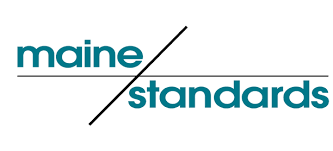Quality assurance is a top priority for clinical laboratories, with the end goal being to identify analytical errors early. The repercussions of inaccurate test results can be severe and far-reaching, leading to possible misdiagnoses and inappropriate care pathways. Diagnostic errors may also have significant time and financial costs for healthcare providers in outpatient and inpatient settings.1
Calibration Verification is the analysis of materials of a known concentration in the same manner as patient samples to confirm that an instrument or test system is fully calibrated and performing as intended. Calibration and calibration verification (CalVer) procedures are required to substantiate the continued accuracy of the test system throughout the laboratory's reportable range of test results for the test system.2 CalVer also serves as an early warning system. It identifies issues with testing or instrumentation before they escalate, enabling lab managers to be proactive instead of reactive. The integrity of CalVer materials (also known as linearity testing samples) is crucial in meeting quality assurance testing requirements and avoiding dangerous and costly diagnostic mistakes.
There are several options when it comes to sourcing CalVer materials, each with its own strengths and weaknesses. Patient samples are usually only accessible in low quantities. They don’t adequately cover the full reportable range and have an unpredictable and unreliable supply. Sourcing and preparing these samples is very time-consuming, and they have low batch-to-batch consistency. IVD-manufactured calibrators are a convenient choice for some, providing CalVer materials in larger quantities than patient samples. However, some downsides keep them from being ideal. We discuss that in more detail below.
Additional options are purchasing CalVer materials from a third-party supplier. Commercial third-party CalVer materials are more plentiful and widely available than patient samples. Some commercial CalVer products come with convenient, ready-to-use liquid samples that include multiple analytes per vial. Using these liquid CalVer materials dramatically reduces manual handling time and the likelihood of human error or contamination, commonly found with lyophilized third-party CalVer materials.
Another benefit of third-party CalVer samples is that they are generally manufactured in human base matrices in compositions meant to be as patient-like as possible. This means they produce highly representative results. Third-party CalVer samples minimize the need for dilutions because they span the instruments’ full range, which saves tech time and reduces the risk for error. In contrast, IVD-supplied calibrators tend to be made from the same raw materials used in the assay and quality control samples, making them highly biased. Furthermore, calibrators are sometimes lyophilized and only cover a single analyte, increasing the number of steps and time needed to perform CalVer.
Commercial products typically have extensive batch sizes and long shelf lives, which allow the same batch to be used over multiple lots of reagents and/or calibrators for the same assay version. They are uniform every time, making it possible to monitor and compare results confidently over the long term. Similarly, third-party manufacturers use data from laboratories separate from the assay manufacture to provide independent and reliable typical values. A wealth of peer data also is available to laboratories when they purchase products from third-party suppliers.
Crucially, CalVer providers manufacture five distinct concentration levels covering the full reportable range to meet the equal-delta protocol set out by the CLSI EP06.3 IVD manufacturers often only provide two calibrator concentration levels produced independently from one another, and CalVer, per CLIA, requires a minimum of three points, a low, a mid, and high point.
Selecting CalVer and linearity materials is an important decision and should be given the same consideration as determining which instrument, method, or assay to use. Third-party CalVer kits are growing in popularity and are a worthy investment, as they provide clinical laboratory personnel with a completely unbiased performance assessment of their test system. This helps ensure that their assays report accurate and representative results every time. Commercial CalVer kits contribute to a robust quality assurance program and are reliable for identifying issues with instruments or test procedures. Ultimately, they help to avoid inaccurate results that could lead to potentially dangerous and costly patient misdiagnoses.
References
-
Tehrani, A. S., H. Lee, S. C. Mathews, A. Shore, M. A. Makary, P. J. Pronovost, and D. E. Newman–Toker. 2013. 25-year summary of U.S. malpractice claims for diagnostic errors, 1986–2010: An analysis from the National Practitioner Data Bank. BMJ Quality & Safety 22(8):672–680.
- Clinical Laboratory Improvement Amendments (CLIA). Centers for Medicare and Medicaid Services. § 493.1255 Standard: Calibration and calibration verification procedures.
-
Clinical and Laboratory Standards Institute (CLSI). 2020. Evaluation of Linearity of Quantitative Measurement Procedures. 2nd ed. CLSI guideline EP06.






/bigstock-Close-up-Of-Unrecognizable-Lab-300840118.jpg)

